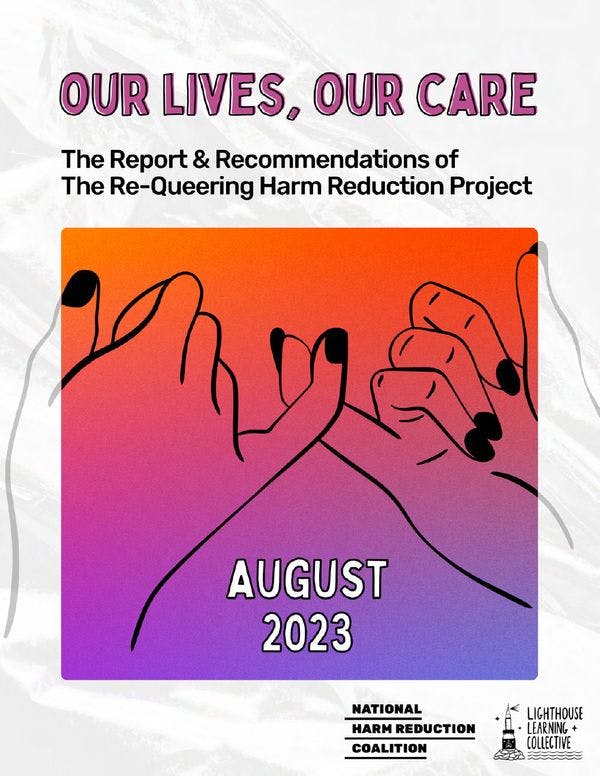Our lives, our care: The report and recommendations of the Re-Queering Harm Reduction project
The Re-Queering Harm Reduction (ROHR) Project's report and recommendations, Our Lives, Our Care, is an appraisal of the state of care for queer and transgender people who use drugs and/or do sex work (QT-PWUD/SW).
The necessity of ROHR emerged from the awareness that our needs as QT-PWUD/SW are largely not being met by the harm reduction and addiction treatment industries. ROHR proceeds from the premise that industry organizations allow profit-driven insurance companies. cost-cutting public insurers. and elite foundations to arbitrarily determine what care can and can not be provided. In contrast. ROHR is rooted in the principle that the actual recipients of services-here. QT -PWUD/SW-must wield the decisive power to collectively determine their infrastructures of care. Here lives the purpose of ROHR: to incite a movement that redesigns our infrastructures of care by expanding upon. deepening. refining. and empowering the means and methods of care already devised by QT-PWUD/SW.
Therefore, ROHR brought together QT-PWUD/SW based in New York City to reflect upon and imagine the possibilities of two questions, respectively: "How do QT-PWUD/SW take care of themselves?" and "How can New York City harm reduction and addiction treatment organizations empower, expand, and deepen the embedded care practices of QT-PWUD/SW?"
Across the board, all 13 ROHR Participants described experiences that reveal two relations between care and drug use: care as drug use, and care for drug use.
Let's call them the prosthetic relation and the remedial relation, respectively. In practice, the prosthetic relation is the use of drugs as tools, as narco-prosthetics, for the purpose of caring for oneself, while the remedial relation is the practice of harm reduction. The two relations are adaptations, the prosthetic in response to antagonistic structural conditions, the remedial to the unintended harmful effects of the prosthetic itself.
When asked how harm reduction organizations can better meet their needs, ROHR Participants imagined infrastructures of care that empower, enhance, and expand their capacities to adapt to psychosomatic, economic, and social conditions-everything from stimulant agonist therapy and Supported Comedown Spaces, to Sex Worker Waypoints and good jobs for all drug users and sex workers, and to making harm reduction fun again.
